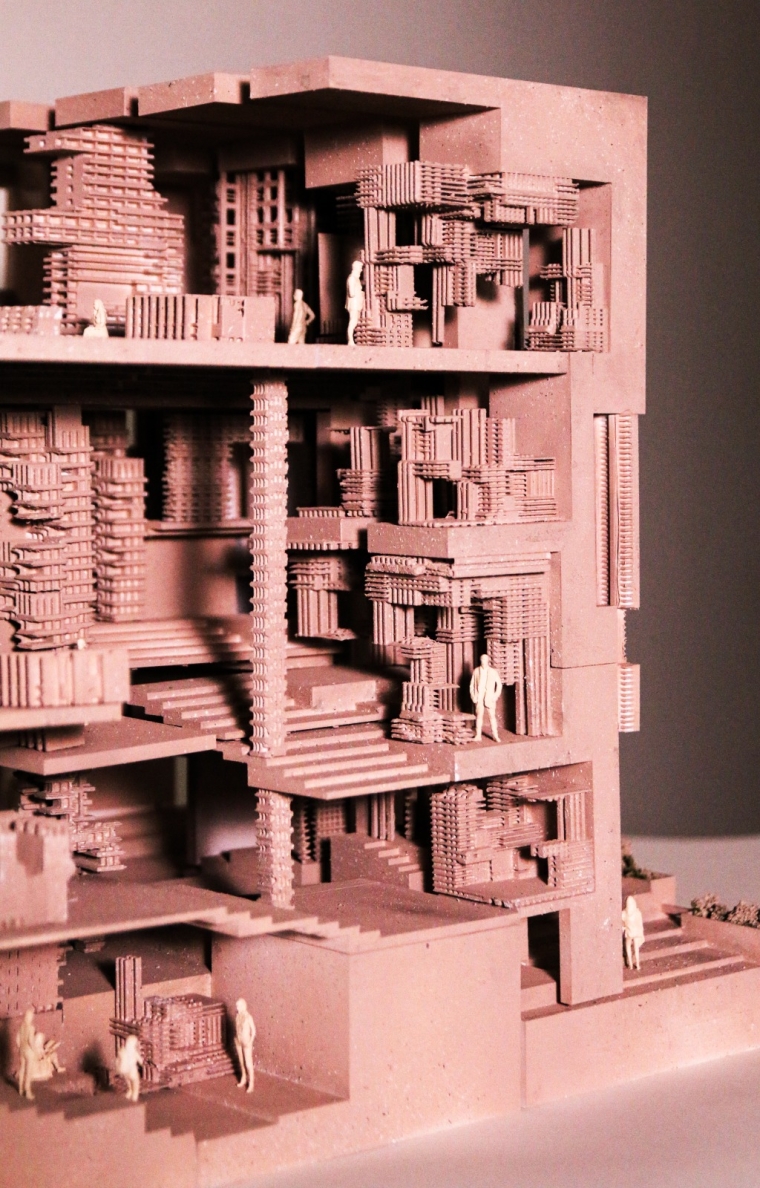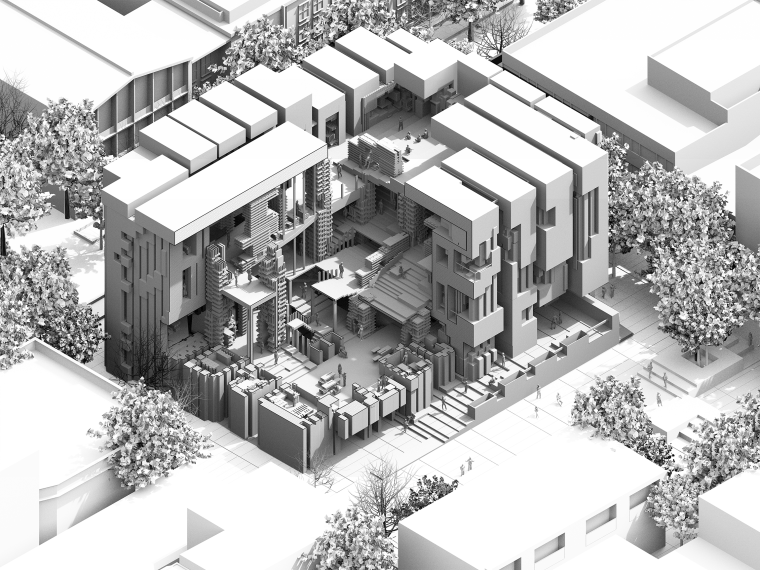Dhanya Suresh
This spring in Barry Wark’s studio , I dove into the challenge of designing civic architecture that bridges environmental rigor and human connection. Our project, Interlace, which is in collaboration with Ananya Khanna, reimagines Mexico City’s library as a dynamic social hub, where climate-responsive systems and spontaneous interactions coexist.
The design was guided by Mexico City’s intense solar conditions, the project’s formal language emerged from parametric solar studies in Houdini, iterating massing and facade geometries to mediate light, heat, and urban scale. This environmental logic materializes as a three-dimensional lattice system—a reinterpretation of traditional brise-soleil—that transitions seamlessly from exterior shading apparatus to interior spatial organizer, structuring ceilings, structure, and furnishings with tectonic coherence. It was a very hands-on process: we 3D-printed massing models, experimented with spray-painting techniques to mimic weathering. Fran, our TA, became our go-to for material hacks to drawing doubts and while Barry pushed us to balance technical precision with environmental intent. The studio’s camaraderie defined the semester. When my lattice model threatened to collapse, our studio team stepped in to reinforce it, giving my team tricks and tips to make it work. Others shared spray-paint tricks, too. Together, we turned frustrations, like finicky Houdini parameters, into breakthroughs. The studio was not just about design, but it reflects our collective spirit; I think that was something I didn't look for, but needed.
I’m grateful for Barry’s guidance, Fran’s support, and my peers’ collaborative energy. This project taught me that by interweaving computational environmental analysis (Houdini-driven solar optimization) with spatial storytelling, the project posits a new paradigm for civic architecture—one where social exchange, environmental intelligence, and formal expression are synthesized into an indivisible architectural narrative.
The design was guided by Mexico City’s intense solar conditions, the project’s formal language emerged from parametric solar studies in Houdini, iterating massing and facade geometries to mediate light, heat, and urban scale. This environmental logic materializes as a three-dimensional lattice system—a reinterpretation of traditional brise-soleil—that transitions seamlessly from exterior shading apparatus to interior spatial organizer, structuring ceilings, structure, and furnishings with tectonic coherence. It was a very hands-on process: we 3D-printed massing models, experimented with spray-painting techniques to mimic weathering. Fran, our TA, became our go-to for material hacks to drawing doubts and while Barry pushed us to balance technical precision with environmental intent. The studio’s camaraderie defined the semester. When my lattice model threatened to collapse, our studio team stepped in to reinforce it, giving my team tricks and tips to make it work. Others shared spray-paint tricks, too. Together, we turned frustrations, like finicky Houdini parameters, into breakthroughs. The studio was not just about design, but it reflects our collective spirit; I think that was something I didn't look for, but needed.
I’m grateful for Barry’s guidance, Fran’s support, and my peers’ collaborative energy. This project taught me that by interweaving computational environmental analysis (Houdini-driven solar optimization) with spatial storytelling, the project posits a new paradigm for civic architecture—one where social exchange, environmental intelligence, and formal expression are synthesized into an indivisible architectural narrative.




